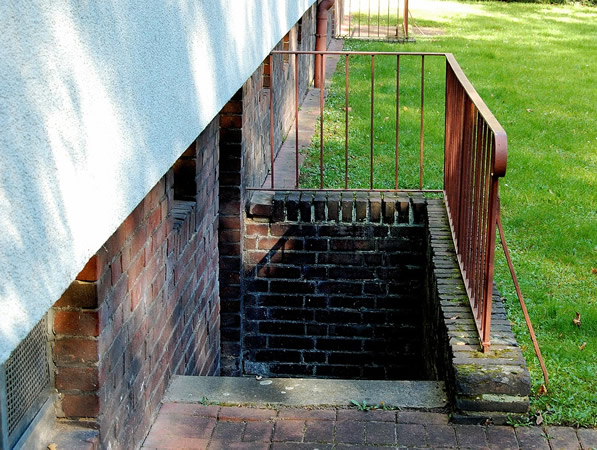Basements are often below grade and carry a high risk of water intrusion. Soil absorbs moisture during rainfall and releases in into the basement through any cracks in the foundation, resulting in leaks. Water can also end up in the basement through something called capillary action, similar to a sponge, where water passes through a seemingly solid structure through porous materials.
Water Damage
The problems of leaks can negatively impact your home inspection. From mold, including toxic mold, to rot, peeling paint, and even foundation collapse. The odds of a termite infestation increase and even air quality can be impacted. The problem must be addressed. Here are some strategies for tackling leaks in the basement or sub-basement.
Diversion
Keeping water away from the foundation should be the first stop. Checking the position of gutters and noticing where the roof drains onto the ground a a first step. Notice where water collects near the foundation. Sometimes, even minor grading of the soil around the foundation can divert water away from the house. If possible, 10 or more feet of sloping away from the house will help prevent standing water.
French drains or swales can divert water that is flowing towards a house and foundation away from it. The key is to make sure your leading the flow away from the foundation.
Repairs
If water is entering the basement there has to be a small crack, a hole, or a porous area. Water pressure builds up outside and forces moisture through the intrusion. This can be because of settling in the foundation or simply age and degradation of the materials. Check for moisture, leaks or discoloration.
If you have concrete, concrete block or masonry you can apply sodium silicate after the material has been cleaned thoroughly. The silicate can penetrate the substrate and fill in even microscopic cracks. It can be applied with a sprayer, roller or a brush after the surface has been dampened. You can even paint over the silicate if it has been carefully applied.
Summary
If you or your home inspector discovers a moisture problem in your basement or sub-basement, begin by identifying the source of the leaks. Divert water way from the foundation with a mixture of grading, french drains or swales and ensure there are no areas of pooling near the house. Preferably within a distance of 10 to 15 feet. Seal the basement with a waterproofer like sodium silicate. Taking these steps can protect your home from mold, peeling paint, rot and foundation collapse as well as improve the air quality within your home.
If you have any questions or need an inspection to determine the source of leaks or mold, contact Peach State Home Inspections today at 404-590-7836 or book an inspection online.


